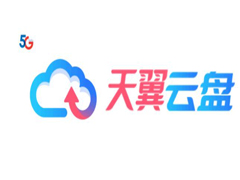有时候,我们的数据是带有层级的,比如常见的省市区三级联动,就是一层套着一层。而我们在数据库存放数据的时候,往往是列表形式的,这个时候可能就需要递归处理为树形结构了。本文就为大家介绍了Java利用递归实现树形结构的工具类,希望对大家有所帮助
那么当我们从数据库查询出来,返回给前端的时候,前端又需要给出树形层级的时候,这个时候可能就需要递归处理为树形结构了,因此下面这个工具或许就可以用得上了。
@Data
@Data
public class Place {
@TreeKey
private String id;
@TreeParentKey
private String parentId;
private String name;
@TreeChildren
private List<Place> children;
public Place(String id, String name, String parentId) {
this.id = id;
this.name = name;
this.parentId = parentId;
public class Test {
public static void main(String[] args) {
List<Place> places = new ArrayList<>();
places.add(new Place("510000", "四川省", "0"));
places.add(new Place("510100", "成都市", "510000"));
places.add(new Place("510107", "武侯区", "510100"));
places.add(new Place("510116", "双流区", "510100"));
places.add(new Place("511600", "广安市", "510000"));
places.add(new Place("511603", "前锋区", "511600"));
places.add(new Place("511621", "岳池县", "511600"));
List<Place> treeList = TreeUtils.getTree(places, "0");
System.out.println(JSON.toJSONString(treeList));
最终效果:
@TreeKey
import java.lang.annotation.ElementType;
import java.lang.annotation.Retention;
import java.lang.annotation.RetentionPolicy;
import java.lang.annotation.Target;
@Target(ElementType.FIELD)
@Retention(RetentionPolicy.RUNTIME)
public @interface TreeKey {
@TreeParentKey
import java.lang.annotation.ElementType;
import java.lang.annotation.Retention;
import java.lang.annotation.RetentionPolicy;
import java.lang.annotation.Target;
@Target(ElementType.FIELD)
@Retention(RetentionPolicy.RUNTIME)
public @interface TreeParentKey {
@TreeChildren
import java.lang.annotation.ElementType;
import java.lang.annotation.Retention;
import java.lang.annotation.RetentionPolicy;
import java.lang.annotation.Target;
@Target(ElementType.FIELD)
@Retention(RetentionPolicy.RUNTIME)
public @interface TreeChildren {
@TreeUtils
package com.csd.utils.tree;
import java.lang.reflect.Field;
import java.util.ArrayList;
import java.util.Collections;
import java.util.List;
import java.util.Objects;
* 递归求树形工具类
* @author Yuanqiang.Zhang
* @since 2023/3/8
public class TreeUtils {
* 集合转化为树形
* @param list 集合
* @param highestParentKey 最高层父节点值
* @param <T> 泛型
* @return 树形
public static <T> List<T> getTree(List<T> list, Object highestParentKey) {
if (Objects.isNull(list) || list.isEmpty()) {
return Collections.emptyList();
Field key = null;
Field parentKey = null;
Field children = null;
Field[] fields = list.get(0).getClass().getDeclaredFields();
for (Field field : fields) {
if (Objects.isNull(key)) {
TreeKey treeKey = field.getAnnotation(TreeKey.class);
if (Objects.nonNull(treeKey)) {
key = field;
continue;
if (Objects.isNull(parentKey)) {
TreeParentKey treeParentKey = field.getAnnotation(TreeParentKey.class);
if (Objects.nonNull(treeParentKey)) {
parentKey = field;
continue;
if (Objects.isNull(children)) {
TreeChildren treeChildren = field.getAnnotation(TreeChildren.class);
if (Objects.nonNull(treeChildren)) {
children = field;
continue;
if (Objects.isNull(key) || Objects.isNull(parentKey) || Objects.isNull(children)) {
return Collections.emptyList();
key.setAccessible(true);
parentKey.setAccessible(true);
children.setAccessible(true);
// 获取最高层数据
List<T> highs = new ArrayList<>();
try {
for (T t : list) {
Object pk = parentKey.get(t);
if (getString(pk).equals(getString(highestParentKey))) {
highs.add(t);
// 获取最高层子孙节点
for (T t : highs) {
setChildren(list, t, key, parentKey, children);
} catch (IllegalAccessException e) {
e.printStackTrace();
return highs;
* 获取子孙节点
* @param list 集合
* @param parent 父节点对象
* @param key 唯一属性
* @param parentKey 父唯一属性
* @param children 节点
* @param <T> 泛型
* @return 带有子孙集合的父节点对象
* @throws IllegalAccessException
private static <T> T setChildren(List<T> list, T parent, Field key, Field parentKey, Field children) throws IllegalAccessException {
Object k = key.get(parent);
List<T> tempList = new ArrayList<>();
for (T t : list) {
Object pk = parentKey.get(t);
if (getString(k).equals(getString(pk))) {
tempList.add(setChildren(list, t, key, parentKey, children));
children.set(parent, tempList);
return parent;
* 获取字符串
* @param o 值
* @return 字符串
private static String getString(Object o) {
return Objects.isNull(o) ? "" : o.toString();
以上就是Java利用递归实现树形结构的工具类的详细内容,更多关于Java树形结构的资料请关注脚本之家其它相关文章!
您可能感兴趣的文章:
 profiles.active多环境开发、测试、部署过程2023-03-03
profiles.active多环境开发、测试、部署过程2023-03-03
 一文带你搞懂Java中线程的创建方式2023-03-03
一文带你搞懂Java中线程的创建方式2023-03-03
 宁可用Lombok也不把成员设置为public原理解析2023-03-03
宁可用Lombok也不把成员设置为public原理解析2023-03-03
 Maven项目修改JDK版本全过程2023-03-03
Maven项目修改JDK版本全过程2023-03-03
 怎样通过反射获取非静态内部类实例2023-03-03
怎样通过反射获取非静态内部类实例2023-03-03
 Java利用递归实现树形结构的工具类2023-03-03
Java利用递归实现树形结构的工具类2023-03-03
 Java平台调试体系原理分析和实践整理 远程Debug2023-03-03
Java平台调试体系原理分析和实践整理 远程Debug2023-03-03
 SpringBoot 将配置文件挂到 jar 包外面的操作方法2023-03-03
SpringBoot 将配置文件挂到 jar 包外面的操作方法2023-03-03
 美国设下计谋,用娘炮文化重塑日本,已影响至中国2021-11-19
美国设下计谋,用娘炮文化重塑日本,已影响至中国2021-11-19 时空伴随者是什么意思?时空伴随者介绍2021-11-09
时空伴随者是什么意思?时空伴随者介绍2021-11-09 工信部称网盘企业免费用户最低速率应满足基本下载需求,天翼云盘回应:坚决支持,始终2021-11-05
工信部称网盘企业免费用户最低速率应满足基本下载需求,天翼云盘回应:坚决支持,始终2021-11-05 2022年放假安排出炉:五一连休5天 2022年所有节日一览表2021-10-26
2022年放假安排出炉:五一连休5天 2022年所有节日一览表2021-10-26
电脑版 - 返回首页
2006-2023 脚本之家 JB51.Net , All Rights Reserved.
苏ICP备14036222号











